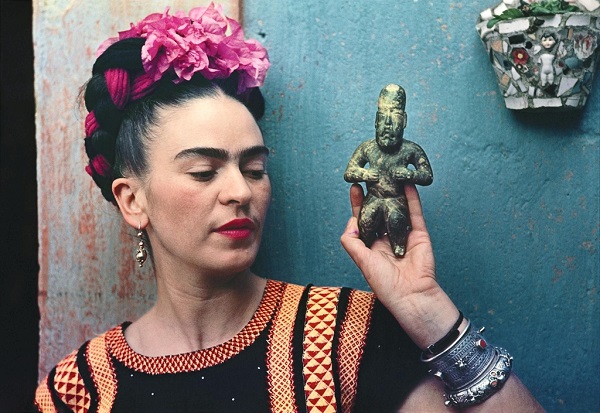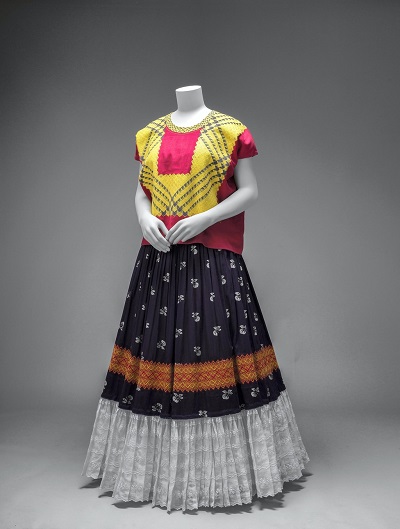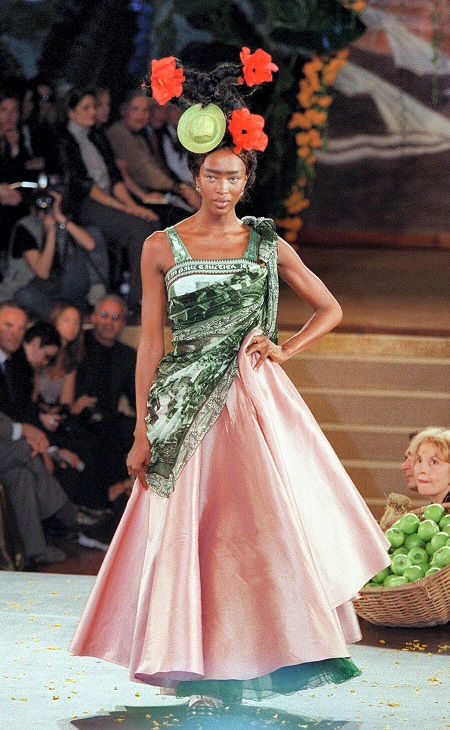When Mexican artist Frida Kahlo died in 1954, at the age of 47, her husband Diego Rivera ordered that her room – and everything in it – be sealed, with instructions for it not to be opened again until after his death. Although Rivera, who was a painter himself and helped set up the Mexican mural movement, died three years later, it was not until 2004 that Kahlo’s room was finally reopened. Within lay a near-perfect time capsule of her life, from her distinctive clothes to her favourite make-up.
Now, for the first time, this extraordinary collection is being shown outside of her native Mexico, at the Victoria & Albert Museum in London. Entitled Frida Kahlo: Making Her Self Up, the exhibition is a look not only at Kahlo’s possessions, but also at how she used them to create the unique and powerful image she presented to the world.
Cotton skirt with embroidery and holán Ensemble from the Isthmus of Tehuantepec. Photograph Javier Hinojosa. © Diego Riviera and Frida Kahlo Archives, Banco de México, Fiduciary of the Trust of the Diego Riviera and Frida Kahlo Museums.”
Frida Kahlo’s favoured outfit: a huipil blouse and skirt. Javier Hinojosa
An artist famous for works inspired by nature and Mexican artefacts, as well as brutally honest self-portraits, Kahlo’s experience was one of extreme creativity marred by intense personal tragedy. Born in 1907 in Coyoacan, Mexico City, Magdalena Carmen Frida Kahlo y Calderon was a bright and spirited child, who understood the power of appearance from an early age. Family photographs show a teenage Kahlo wearing a man’s suit (complete with shirt and tie), with her famous monobrow untouched and her hair slicked back in a masculine manner. Amid her sisters, who are dressed in fashionable American-style clothing, Kahlo is striking in her uniqueness.
A childhood bout of polio meant she had to endure months of bed rest, but despite being left with a deformed right leg and months of missed education, Kahlo was active and sporty, and became one of the few girls allowed to attend the renowned National Preparatory High School.
In 1925, however, when she was 18, Kahlo’s life was altered completely, when the bus she was travelling on collided with a tram, plunging a steel rail through her abdomen. With a severely damaged spine, leg and pelvis, she was lucky to survive, and spent weeks in hospital in a full-body cast. Her injuries left her in constant pain for the rest of her life, and she would endure close to 35 operations, including spinal taps and botched attempts to fuse her vertebrae, to try to repair the destruction.
British top model Naomi Campbell shows off a long bustier evening dress with wide straps and green scarf-like top and light pink skirt 17 October during the presentation in Paris of French designer Jean-Paul Gaultier’s Spring/Summer ’98 ready-to-wear collection. / AFP PHOTO / THOMAS COEX”
Naomi Campbell at the Kahlo-inspired Jean-Paul Gaultier show in 1998. AFP
It was during her long recovery that Kahlo began to paint, channelling her pain into art. Unable to move, she painted her own portrait. She later explained: “I paint self-portraits because I am so often alone, because I am the person I know best.” Painting became Kahlo’s focus, and a medium for exploring and confronting the painful personal journey that she now found herself on.
Click here for full article on https://www.thenational.ae/



